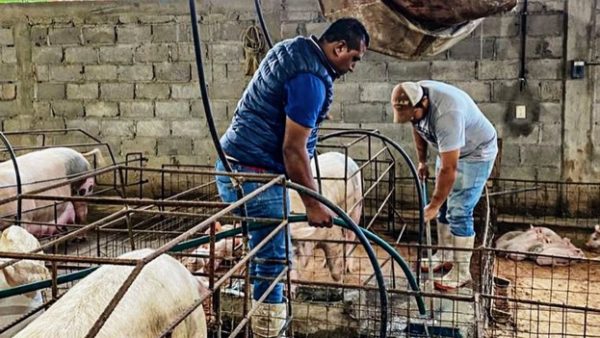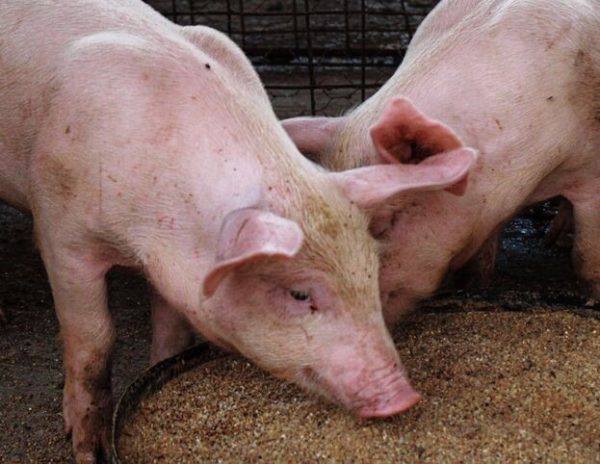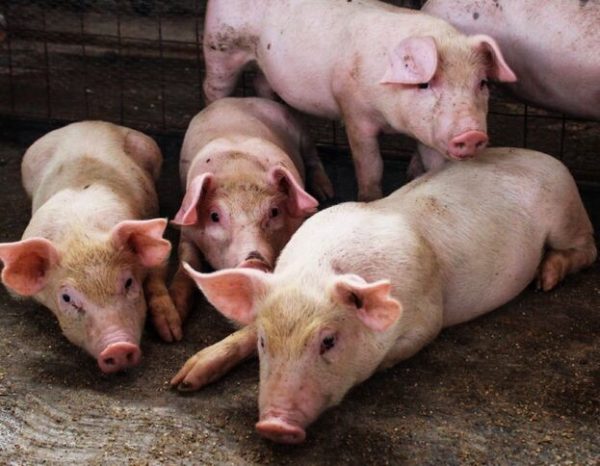Cuban Government Years Behind in Payment to Hog Raisers

At a time of food shortages, the lack of feed led most pork producers to abandon their work.
By Yankiel Gutiérrez Faife (14ymedio)
HAVANA TIMES – The cart towed by an old Soviet tractor left the rural area of Camajuaní in Villa Clara province headed to Remedios. It was loaded with seven pigs whose owners, five farmers who rented the transportation, had made the decision to sell to the state.
With the promise of benefits and good sale prices, the officials had attracted local producers who hoped to stock up on better, well-fed cattle and were able to make the sacrifice. The situation, in practice, was very different.
The agreement consisted of paying half the value of the hogs in cash and the other half in animal feed: maize, fodder and soy. The deal made sense to the producers, as they could use the money and at the same time, were guaranteed food for the other pigs they kept on their farms.
The tractor unloaded the hogs in Remedios and after a long line, the officials weighed and appraised them. They were good animals, well raised, and fattened and they received half of the agreed-upon price in cash. “We don’t have the rest yet, but soon you’ll receive a call to come pick up the feed,” they said.
“It’s been four years,” bemoaned Juan Domingo, “and to this day no one has contacted us.” Along with Ivis, Janiel, Daniel and Elier, he awaits payment for the 28,000 peso debt — in feed for the hogs — that the government continues to delay.
The man stated that since then, they’ve been through the pandemic, the Ordering Task* and different social and financial collapses on the Island. “We’ve insisted, of course, to know why the delay, but they don’t have a response.”

“I lost hope for recuperating that feed,” Ivis told 14ymedio. “They behave as if the hogs never existed, they speak to us with a secrecy when we ask for explanations,” said the woman who agrees with Juan Domingo that the selling hogs is not viable in Cuba.
Raising hogs requires resources and a lot of effort. In the yards of Cuban homes, there was always a bucket where each day, food scraps were deposited. That mix of leftovers was called sancocho, just like the local dish. However, the shortages and the food crisis means that, at the end of the week, there is very little to throw into the bucket.
The price for the “formal” feed for the animals is more absurd by the day. “The cassava, maize and soy are nowhere to be found,” complains Ivis. “A sack of soy could cost 5,500 pesos. The crop residues can be used to feed hogs, but they do not fatten them like the industrial fodder.” All this, says the farm woman, limits the weight of the animals and draws out the fattening process, indispensable for the slaughtering and consumption.
They’ve attempted to fill the gap in soy and maize imports with cassava and the palm nuts, historically used to fatten hogs.
The crisis, however, has resulted in a chain of failures: without imported feed, the government’s debts to producers have grown; neglecting the breeders compromised pig breeding at the provincial level and at one point, the effects were felt throughout the country. “We producers did not have a choice but to cancel our agreements with the state,” stated Juan Domingo. The feed shortages led most pork producers to abandon their work.
In another municipality of Villa Clara, Zulueta, farmer José Luis bites the bullet to keep his 23 hogs fed. “I had 40 hectares of land planted before the crisis,” he stated alluding to the pandemic and the collapse of the Island’s energy sector. “This food is exclusively for the animals and I’ve been preparing it for years.”
Meanwhile, the price of meat has reached abusive levels in any type of market, be it the informal market or the state-owned butcher. “350 pesos per pound is excessive,” calculates José Luis who bemoaned being unable to fatten his hogs enough for them to reach an acceptable weight by the time they are slaughtered.
“The current crisis didn’t begin with the coronavirus,” said the farmer, “but rather two or three years prior, when the Ministry of Agriculture began to promote the ’substitution’ of imported feed.” There was no such change, rather, the feed no longer entered the country, even though it was impossible to cover the gap with national production.
“The agreements with Porcino (the state-owned company that processes and distributes meat) establishes the amount of feed that must be obtained through our own means. They offer no more than 60% or 70% of the feed needed for the animals and it never arrives on time,” he said.

The government’s debt to farm cooperatives mirrors, at a local level, its financial behavior at the international level–delays, extended payment periods or requests for debt forgiveness.
Despite all this, the official press continues to present the government as a “sponsor” of the self-employed that benefits certain lucky farmers. Several weeks ago Granma praised Yusdany Rojas, owner of a farm in Camajuaní, who maintains an unfathomable 800 hogs. And aspires to own 4,000 in a few months, if the bureaucrats give him “more land” and the bank provides enough credit.
Rojas received an official visit by Miguel Díaz-Canel and other officials in his private “slaughterhouse.” He owns, moreover, a tobacco field, sugar cane and other crops and a meat processing plant. The photographs of the successful farm were circulated on all official media.
The reality told by the state press does not mention the real difficulties faced by producers, the shortages and lack of resources faced by farmers. And as of now, neither do they dedicate space to explain when and how the Cuban government plans to honor its word and pay its debts.
—–
*Translator’s Note: Tarea ordenamiento = the [so-called] ‘Ordering Task’ is a collection of measures that include eliminating the Cuban Convertible Peso (CUC), thus leaving the Cuban peso as the only national currency, raising prices, raising salaries (but not as much as prices), opening stores that take payment only in hard currency which must be in the form of specially issued pre-paid debit cards, and a broad range of other measures targeted to different elements of the Cuban economy.
Translated by: Silvia Suárez for Translating Cuba
—–





